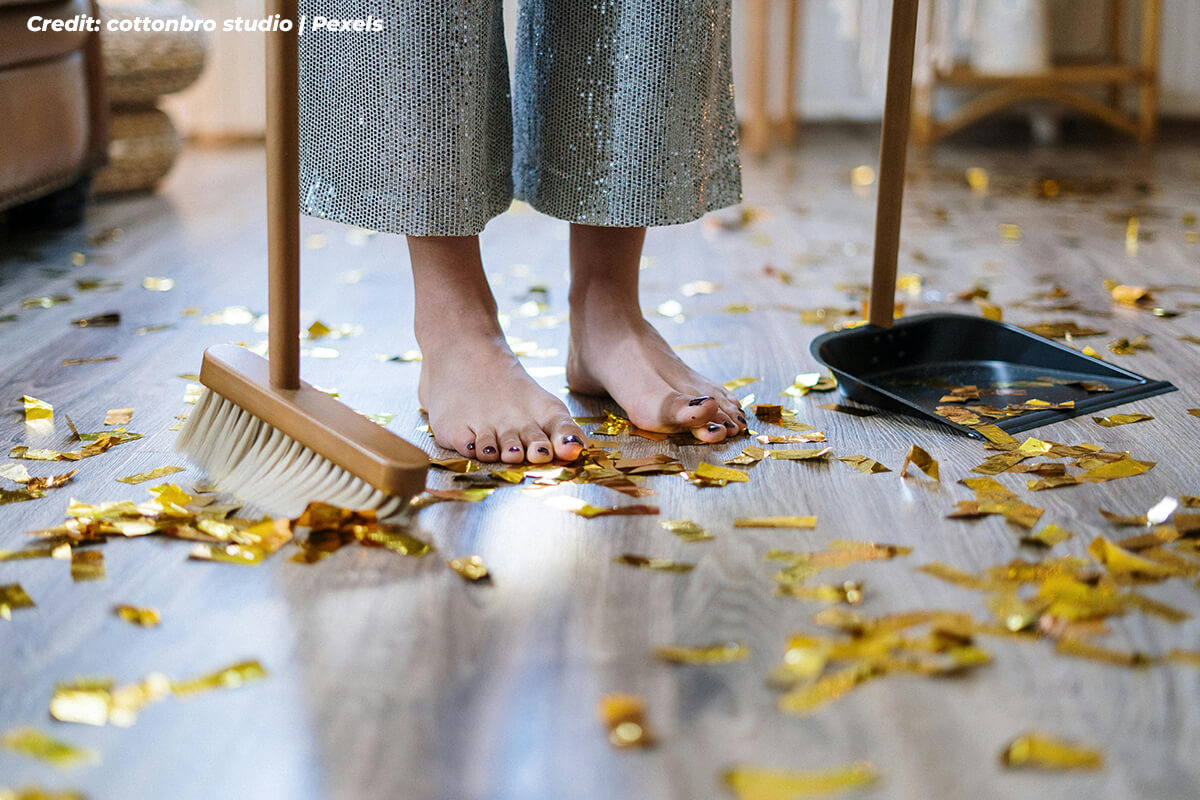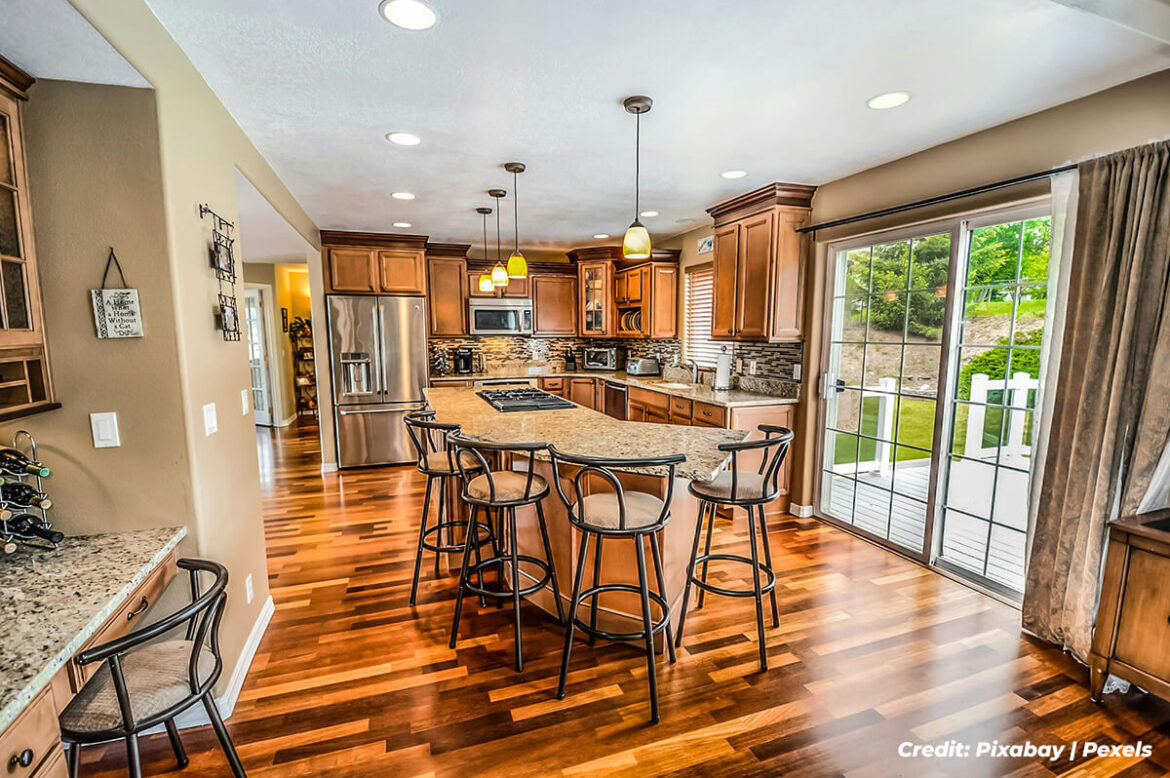When you step into a flooring showroom, your senses are immediately engaged. You’re drawn to the rich, warm tones of a walnut plank, the clean, modern lines of a light oak, or the unique grain pattern of hickory. You’ll undoubtedly discuss the species of wood, the colour, the plank width, and, of course, the price. But there’s a critical specification, often buried in the technical data sheet, that has a far greater impact on your investment’s long-term value than any of those factors: the wear layer thickness.
For too long, this crucial detail has been overlooked by consumers. It’s the unsung hero of flooring, the single most important variable that dictates whether your beautiful new floor will last for a decade or for generations. In this article, we’ll demystify the wear layer and explain why paying attention to it is the smartest decision you can make for your home.

What Exactly Is a Wear Layer?
Before we can appreciate its importance, we need to understand what a wear layer is. The term can mean slightly different things for different types of flooring, but the principle is the same: it is the topmost, durable surface of a flooring plank that you actually walk on. It’s designed to withstand all the traffic, scuffs, scratches, and spills of daily life.
- In solid hardwood flooring, the wear layer is technically the entire thickness of the wood above the tongue and groove. This gives it a substantial wear layer, typically around 5 mm to 7 mm.
- In luxury vinyl plank (LVP), it’s a clear, protective coating of urethane, measured in mils (thousandths of an inch).
- In engineered hardwood flooring, it is the top layer, or veneer, of real, solid hardwood that is bonded to a stable, multi-layered core.
Think of the wear layer as the tread on a tire. A tire with deep tread can travel for tens of thousands of miles, handling rough roads and adverse conditions. A tire with thin, worn tread is a liability, ready to fail at any moment. Your floor’s wear layer functions in precisely the same way. It is the sacrificial material that protects the structural integrity of the plank beneath it.
The Wear Layer in Engineered Hardwood Flooring
The concept of the wear layer is most critical when discussing engineered hardwood flooring. This brilliant innovation combines the timeless beauty of actual wood with better structural stability. It is made up of a core derived from layers of high-density fiberboard (HDF) or plywood with a veneer of premium hardwood on top. That top veneer is the wear layer.
The thickness of this real wood veneer can vary dramatically, from as little as 0.6 mm to over 6 mm. This range is where consumers can make a costly mistake. A floor with a paper-thin 1 mm wear layer may look identical to one with a robust 4 mm wear layer when it’s fresh out of the box. They might even be the same wood species and colour. However, their performance and lifespan are worlds apart. A thicker wear layer provides inherent durability against deep gouges and impacts, but its most significant advantage lies in one key capability: refinishing.
The Refinishing Factor: Turning Lifespan into “Lives-pan”
Hardwood floors are unique among flooring options because they can be renewed. When they become scratched, dented, or the finish dulls over time, they don’t have to be replaced. They can be sanded down to reveal a fresh layer of raw wood, and then stained and sealed to look brand new again. This process is what gives hardwood its legendary longevity.
However, the ability to refinish a floor is entirely dependent on the thickness of its wear layer.
The sanding process removes a small amount of the wood surface, typically between 0.75 mm and 1 mm. This means the number of times a floor can be professionally refinished is a direct function of its wear layer thickness.
- Wear Layer of 2 mm or less
These floors are often considered “disposable.” They cannot be sanded. Once the original factory finish is compromised or the floor sustains significant scratches, it must be replaced. Its lifespan is limited to the life of its initial finish. - Wear Layer of 3 mm
This is a good middle-ground. A floor with a 3 mm wear layer can typically be sanded and refinished once, and perhaps a second time with extreme care. This effectively doubles or triples the floor’s potential lifespan, allowing you to erase a decade of wear and tear. - Wear Layer of 4 mm or more
This is the premium standard. Floors with a wear layer of 4 mm, 5 mm, or even 6 mm can be sanded and refinished multiple times, just like traditional solid hardwood. This is a “generational” floor. It’s an investment that can last 50, 75, or even 100 years, adapting to new design trends and looking pristine through multiple homeowners.
Wear Layer Thickness vs. Finish Quality: A Common Confusion
It’s easy to confuse the quality of the floor’s finish with the thickness of the wear layer. Many manufacturers will rightly boast about their advanced, multi-coat aluminum oxide or UV-cured urethane finishes. These high-tech coatings are excellent and provide superior initial resistance to scratches and fading.
However, no finish is indestructible. A dropped pot, a dragged piece of heavy furniture, or even a large dog’s claws can create a deep gouge that penetrates the finish and bites into the wood itself. When this happens, the quality of the factory finish becomes irrelevant. The only solution to repair that damage is to sand the floor down past the depth of the scratch. If your wear layer is too thin, this simply isn’t an option. The finish protects the wear layer, but the wear layer is what gives your floor the ability to be reborn.

How to Choose the Right Wear Layer for Your Needs
So, how much wear layer do you actually need? The answer depends on your specific application and long-term goals.
- For Low-Traffic Areas or Quick Turnarounds
If you’re flooring a rarely used guest room or preparing a property for a quick sale, a more budget-friendly engineered hardwood flooring with a thinner (1.5 mm to 2 mm) wear layer might suffice. - For the Average Family Home
For primary living areas, bedrooms, and kitchens, a wear layer of at least 3 mm is the recommended sweet spot. This provides an excellent balance of cost-effectiveness and longevity, ensuring you have the option for at least one full refinishing down the line. - For Your “Forever Home” or High-Traffic Zones
If you are investing in a floor for your dream home where you plan to live for decades, or for a high-traffic environment like a busy hallway or commercial space, accept nothing less than a 4 mm wear layer. The upfront cost will be slightly higher, but the return on investment in terms of lifespan and peace of mind is immeasurable.
The next time you’re shopping for a floor, look past the surface beauty. Ask the salesperson a simple question: “What is the thickness of the wear layer?” A knowledgeable professional will have the answer ready. It’s a question that separates a short-term purchase from a long-term investment and ensures the floor you love today is a floor you can live with for a lifetime.
Don’t leave your floor’s future to chance. Our experts at Capital Hardwood Flooring can walk you through the technical specifications of all our products, ensuring you get the perfect balance of beauty, durability, and long-term value. Call us today for a consultation at 416-536-2200
